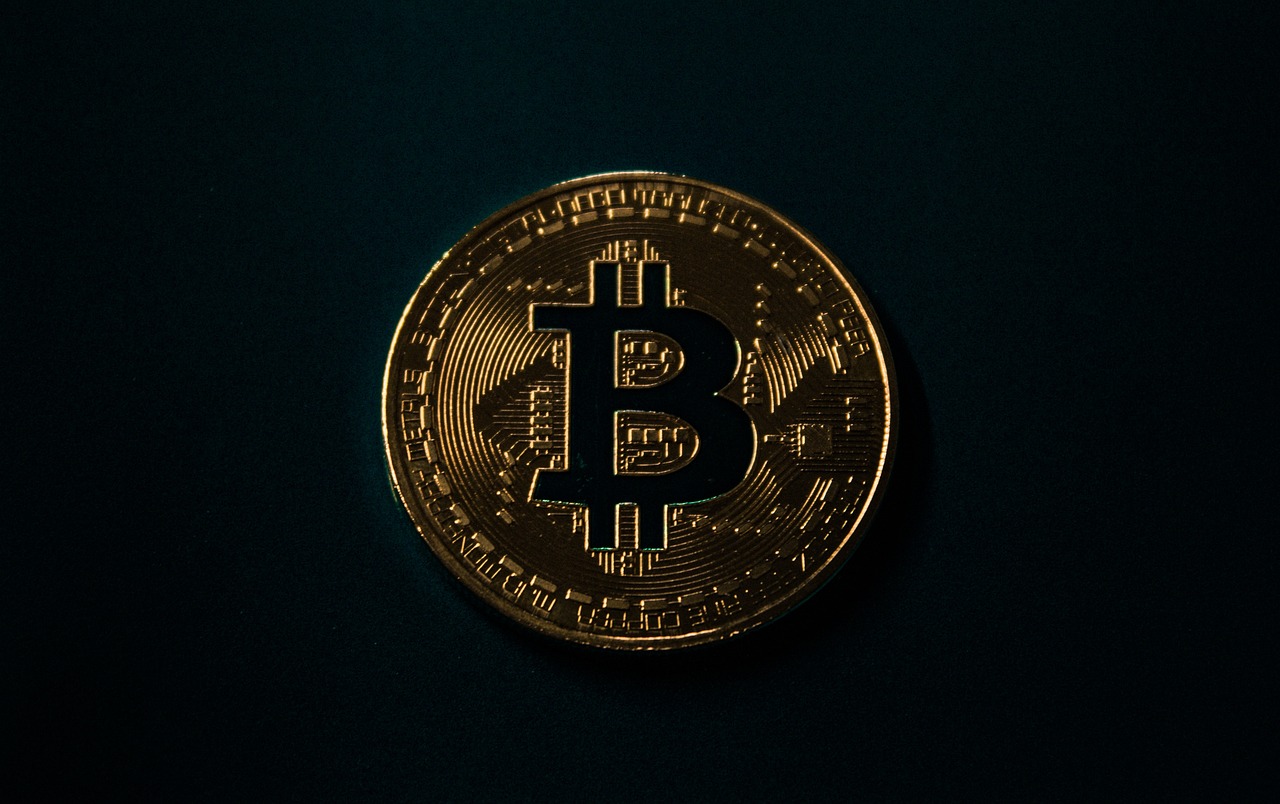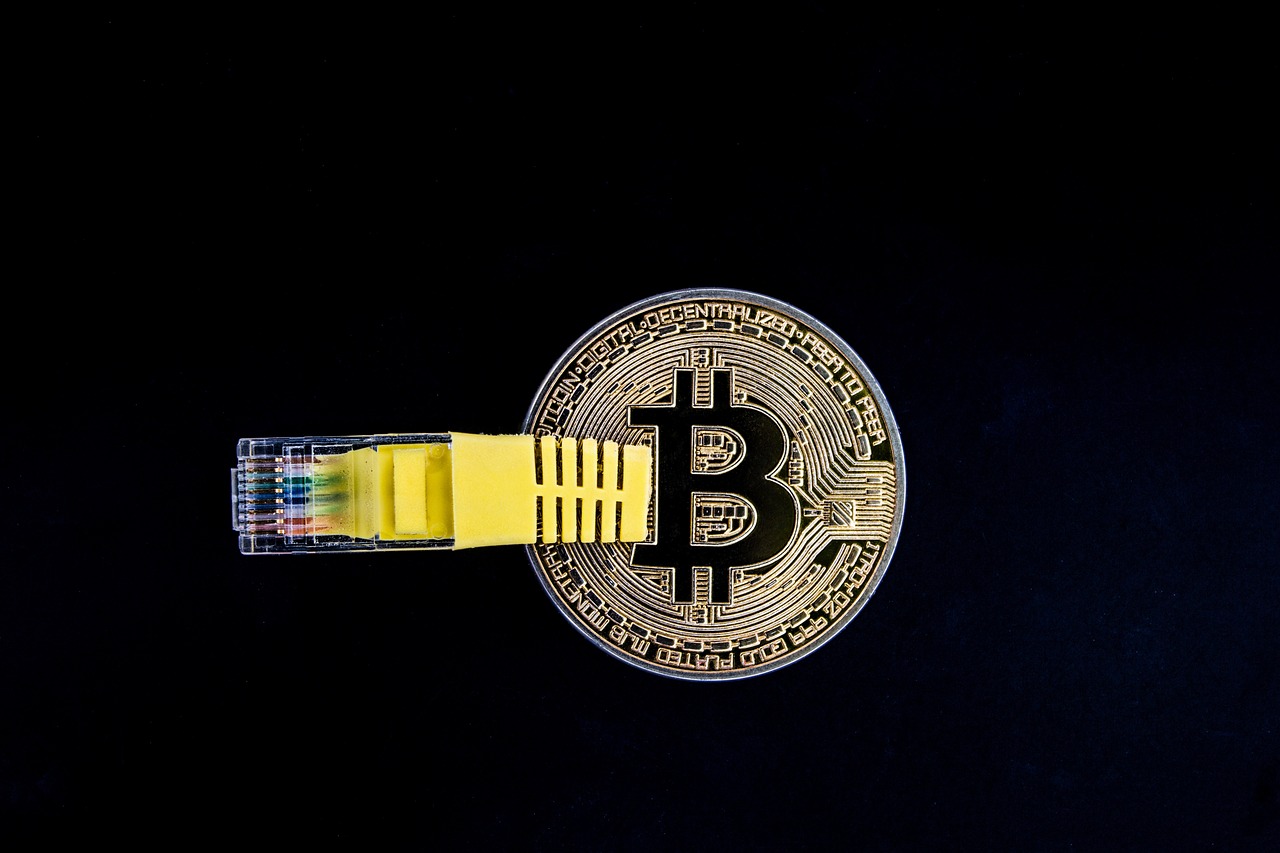How to Maximize Returns with Staking
Staking has emerged as a powerful tool for cryptocurrency enthusiasts looking to enhance their earnings while contributing to the stability and security of blockchain networks. But what exactly is staking, and how can you maximize your returns? In this article, we will explore effective strategies and insights that can help both beginners and seasoned investors navigate the world of staking. Think of staking as a garden; the more care and attention you give it, the more bountiful your harvest will be. So, let’s dig in!
At its core, staking involves locking up a certain amount of cryptocurrency to support the operations of a blockchain network. In return for this commitment, participants earn rewards, often in the form of additional cryptocurrency. This process not only helps secure the network but also allows investors to earn passive income. Unlike traditional investing, where you might buy and sell assets for profit, staking requires a more hands-on approach. You’re not just holding; you’re actively participating in the ecosystem. This makes staking an exciting avenue for those looking to grow their crypto portfolio.
Selecting the appropriate cryptocurrency for staking is crucial to your success. Not all cryptocurrencies offer the same staking rewards or have the same level of risk. When considering which cryptocurrency to stake, think about the following factors:
- Market Trends: Is the cryptocurrency gaining popularity? Look at the recent price movements and trading volumes.
- Project Fundamentals: What is the underlying technology? Is there a solid use case?
- Potential Returns: What are the staking rewards, and how do they compare to other options?
By carefully evaluating these factors, you can make a more informed decision that aligns with your investment goals.
When it comes to staking, understanding the fundamentals of a project can significantly impact your long-term success. Here are some key indicators to consider:
A strong development team is essential for a project's success. Look for teams with a proven track record in the cryptocurrency space. Research their previous projects and see if they have successfully launched and managed them. A competent team can be the difference between a flourishing project and one that fades into obscurity.
Understanding the technology behind a cryptocurrency and its use case can greatly influence its staking potential. Innovative technology can drive demand and increase the likelihood of higher staking rewards. For instance, cryptocurrencies that solve real-world problems tend to attract more users, which can lead to increased value and, consequently, better rewards for stakers.
Staying informed about market trends is vital for staking success. Regularly analyzing market conditions and sentiment can help you make informed decisions about when to stake or unstake your assets. Utilize various tools and platforms that provide insights into market trends, and don’t hesitate to engage with the community. Forums and social media can be treasure troves of information where you can learn from the experiences of others.
A secure staking wallet is essential for managing your assets effectively. When setting up a wallet, you have two main options: software wallets and hardware wallets. Each has its pros and cons, and your choice will depend on your individual needs and security preferences.
Software wallets are convenient and easy to use, making them ideal for beginners. However, they are more susceptible to hacks. On the other hand, hardware wallets provide enhanced security by storing your assets offline. While they may require a bit more effort to set up, the peace of mind they offer is often worth it for serious investors.
Backing up your staking wallet is crucial to prevent the loss of assets. To create effective backups, consider the following tips:
- Use multiple backup methods, such as cloud storage and physical copies.
- Regularly update your backups to include new transactions.
- Store your backup in a secure location, away from prying eyes.
By taking these precautions, you can ensure the safety of your investments and enjoy the benefits of staking without worry.
To truly maximize your staking rewards, consider implementing a few strategies. One effective approach is to optimize your lock-up periods. Choosing the right duration can significantly impact your returns. While longer lock-up periods may yield higher rewards, they also reduce your liquidity. Striking a balance between these factors is key.
Engaging in governance can provide additional rewards. Many staking platforms allow participants to vote on key decisions that affect the project’s future. By being an active participant, you not only contribute to the project’s direction but can also earn extra rewards. Think of it as being part of a cooperative; your voice matters, and your involvement can lead to greater benefits.
1. What is staking?
Staking is the process of locking up cryptocurrency to support a blockchain network's operations, earning rewards in return.
2. How do I choose the right cryptocurrency for staking?
Consider market trends, project fundamentals, and potential returns when selecting a cryptocurrency to stake.
3. What is the difference between software and hardware wallets?
Software wallets are convenient but less secure, while hardware wallets provide enhanced security by storing assets offline.
4. How can I maximize my staking rewards?
Optimize lock-up periods, participate in governance, and stay informed about market trends to enhance your staking returns.

Understanding Staking
Staking is a fascinating concept in the world of cryptocurrency that involves locking up your digital assets to support the operations of a blockchain network. Think of it as putting your money in a high-interest savings account, but instead of earning interest from a bank, you're earning rewards from the network. When you stake your cryptocurrency, you're essentially helping to validate transactions and secure the network, and in return, you receive rewards, usually in the form of additional coins or tokens. This creates a win-win situation where both the investor and the network benefit.
The benefits of staking are numerous and can be quite appealing, especially for those looking to enhance their earnings without the volatility that comes with trading. One of the most significant advantages is the potential for passive income. Imagine earning money while you sleep! By staking your coins, you can generate a steady stream of rewards just by holding onto your assets. Additionally, staking often comes with lower risks compared to traditional trading, as it doesn't require constant monitoring of market fluctuations.
However, it's essential to understand how staking differs from traditional investing. In traditional investing, you typically buy assets with the hope that their value will increase over time. In contrast, staking involves committing your assets to a network for a specific period, which can affect your liquidity. While your assets are staked, you won't be able to trade or sell them, which means you must be comfortable with the idea of locking up your investment for a set duration. This is where the concept of opportunity cost comes into play. Are you willing to miss out on potential gains from trading to earn staking rewards?
Moreover, staking isn't without its challenges. Various factors can influence your staking experience, such as the type of cryptocurrency you choose, the staking protocol used, and the overall health of the blockchain network. It's crucial to do your homework and understand the nuances of staking before diving in. For example, some cryptocurrencies have minimum staking requirements, while others may have specific rules about how rewards are distributed. Understanding these intricacies can help you make informed decisions and maximize your returns.
In summary, staking is an intriguing method of earning rewards in the cryptocurrency space, combining the benefits of passive income with the security of blockchain technology. As you explore this avenue, remember to weigh the pros and cons carefully, and consider how it fits into your overall investment strategy. By doing so, you'll be better equipped to navigate the world of staking and make the most of your digital assets.

Choosing the Right Cryptocurrency
When it comes to staking, one of the most critical decisions you'll make is choosing the right cryptocurrency. With thousands of options available, it can feel overwhelming, like trying to find a needle in a haystack. But fear not! By focusing on a few key factors, you can make a wise investment choice that maximizes your staking rewards.
First off, you need to dive into the market trends. Keeping an eye on the market is essential because cryptocurrencies can be as volatile as a roller coaster ride. Look for coins that show consistent growth, solid trading volume, and have a strong presence in the market. You can use various tools and platforms to analyze price movements and market sentiment, which can help you gauge whether a cryptocurrency is worth staking.
Next up, let’s talk about project fundamentals. This is where you really get to know the cryptocurrency you're considering. A project’s fundamentals can tell you a lot about its long-term viability. Here are some indicators to consider:
- Team Experience: Research the team behind the project. A strong, experienced team can be a game-changer. Look for their background, previous projects, and overall reputation in the crypto community.
- Technology: Understand the technology behind the cryptocurrency. Innovative tech can drive demand, which in turn can lead to higher staking rewards.
- Community Support: A strong, engaged community can indicate a project’s potential for growth. Check social media channels, forums, and other platforms to gauge community sentiment.
Now, let’s not forget about the potential returns. Every investor wants to know how much they can earn from staking. While it's impossible to predict returns with absolute certainty, you can look at the historical performance of the cryptocurrency and its staking rewards. Some cryptocurrencies offer higher rewards than others, but often, higher returns come with increased risk. Therefore, it’s essential to strike a balance between potential rewards and the level of risk you’re willing to take.
Lastly, consider the liquidity of the cryptocurrency. Liquidity refers to how easily you can buy or sell your assets without affecting the price. Cryptocurrencies with higher liquidity tend to be less volatile and provide a more stable staking experience. If you think you might need to access your funds quickly, you might want to steer clear of staking assets that are less liquid.
In summary, choosing the right cryptocurrency for staking involves a combination of market analysis, understanding project fundamentals, assessing potential returns, and considering liquidity. By taking the time to research and evaluate these factors, you can enhance your chances of making a profitable staking investment.
- What is staking in cryptocurrency? Staking involves locking up cryptocurrency to support a blockchain network's operations, earning rewards in return.
- How do I choose the right cryptocurrency for staking? Focus on market trends, project fundamentals, potential returns, and liquidity.
- What are the risks associated with staking? Risks include market volatility, project failure, and potential loss of funds.

Evaluating Project Fundamentals
When diving into the world of cryptocurrency staking, understanding the fundamentals of a project is like reading the map before setting out on a journey. You wouldn't embark on a road trip without knowing your route, right? Similarly, analyzing a project's fundamentals helps you gauge its long-term viability and potential for success. Here are some key indicators to keep an eye on:
- Team Experience: The backbone of any successful project is its team. A strong development team brings expertise, vision, and the ability to navigate challenges. Look for teams with a proven track record in the crypto space or related industries. Experience often translates to reliability and innovation.
- Technology: What’s under the hood? Understanding the technology behind a cryptocurrency can significantly impact its staking potential. Innovative projects that solve real-world problems tend to attract more users and, consequently, increase demand for staking.
- Community Support: A vibrant and engaged community can be a strong indicator of a project's potential. Communities that actively participate in discussions, development, and marketing can help propel a project forward, increasing its chances of success.
Let’s break these down a bit further. First up, the team experience. A project led by seasoned professionals is likely to have a better chance of overcoming obstacles. For instance, if the team has successfully launched previous projects, it’s a good sign they know what they’re doing. You can usually find information about the team on the project's website or through social media channels. Look for their LinkedIn profiles to see their history and expertise.
Next, we have technology and use case. Cryptocurrency isn’t just a buzzword; it’s a tool designed to solve specific problems. Analyze the technology behind the project: is it scalable? Does it have unique features that set it apart from competitors? Projects that utilize cutting-edge technology, such as blockchain scalability solutions or decentralized finance (DeFi) applications, are often more attractive for staking. A solid use case ensures that there’s a demand for the token, which can lead to higher staking rewards.
Lastly, let’s talk about community support. A strong community can be a project’s best marketing tool. If the community is passionate and dedicated, it can drive adoption and usage of the cryptocurrency, which directly impacts its value. Check platforms like Reddit, Telegram, or Discord to gauge community sentiment and engagement. A thriving community often means that the project is on the right track.
In summary, evaluating project fundamentals is crucial for anyone looking to stake their assets. By paying attention to the team’s experience, the technology, and the community support, you can make informed decisions that enhance your staking experience. Remember, the cryptocurrency landscape is ever-evolving, and staying informed will keep you ahead of the game!
1. What are the key factors to consider when evaluating a cryptocurrency project?
When evaluating a cryptocurrency project, consider the team's experience, the technology behind the project, and the level of community support. These factors can significantly influence the project's success and your potential returns from staking.
2. How important is the development team in a cryptocurrency project?
The development team is crucial as their expertise and track record can determine the project's ability to innovate and overcome challenges. A strong team often leads to a more reliable and successful project.
3. Why should I care about community support?
Community support can drive adoption and usage of a cryptocurrency, which directly impacts its value and staking rewards. An engaged community often indicates a project's potential for growth and sustainability.

Team Experience
When it comes to staking in cryptocurrency, the experience of the development team behind a project can be a game-changer. Think of it like this: would you trust a ship captain who has never sailed before to navigate through stormy seas? The same principle applies here. A strong, experienced team not only inspires confidence but also enhances the likelihood of a project's success. So, how do you evaluate the expertise of the team behind your potential staking investment?
First, look into the backgrounds of the team members. This includes their previous work experience, educational qualifications, and any notable achievements in the tech or finance sectors. A team with a proven track record in successful projects is generally a good sign. You can often find this information on the project's official website or their LinkedIn profiles. If they have experience in blockchain technology or have contributed to reputable projects, that’s a big plus.
Next, consider the diversity of skills within the team. A well-rounded team should include individuals with expertise in various areas such as software development, marketing, finance, and community management. This diversity not only enriches the project but also enables it to adapt to challenges. For instance, if a project faces technical issues, having experienced developers on board can facilitate quicker resolutions.
Furthermore, evaluate the community engagement of the team. Are they active on social media platforms and forums? Do they communicate openly with their community? A team that is willing to engage with its users shows transparency and a commitment to building trust. This is crucial, especially in the volatile world of cryptocurrencies, where investor confidence can significantly impact a project's success.
Lastly, look for any partnerships or collaborations that the team has established. Successful projects often collaborate with established companies or other blockchain projects, which can enhance their credibility and provide additional resources. This can also lead to increased visibility and potential growth opportunities, making the staking investment more attractive.
In summary, the experience and background of the team behind a cryptocurrency project are vital indicators of its potential success. By thoroughly researching the team’s qualifications, skills, community involvement, and partnerships, you can make a more informed decision when selecting a cryptocurrency for staking. Remember, investing in cryptocurrency is not just about the numbers; it’s also about the people driving the project forward.
- What is staking in cryptocurrency?
Staking involves locking up your cryptocurrency to support the operations of a blockchain network, earning rewards in return. - How do I choose the right cryptocurrency for staking?
Consider factors such as market trends, project fundamentals, and potential returns. - Why is the team experience important?
A strong development team can significantly impact the success and reliability of a cryptocurrency project. - What types of wallets can I use for staking?
You can use software wallets or hardware wallets, each with its own pros and cons. - How can I maximize my staking rewards?
Strategies include optimizing lock-up periods, participating in governance, and leveraging compounding returns.

Technology and Use Case
When diving into the world of cryptocurrency, understanding the technology behind a project and its use case is crucial for maximizing your staking rewards. Think of it like choosing a car: you wouldn’t just pick any vehicle; you'd want one that’s reliable, efficient, and serves your needs, right? Similarly, in the crypto space, the underlying technology and its practical applications can significantly impact both the value of the cryptocurrency and your potential returns.
The technology behind a cryptocurrency often dictates its scalability, security, and overall functionality. For instance, projects that utilize innovative consensus mechanisms, like Proof of Stake (PoS) or Delegated Proof of Stake (DPoS), tend to offer higher staking rewards compared to those using older models. This is because these newer models are designed to be more efficient and can handle a larger number of transactions, which can drive demand and increase the token's value over time.
Moreover, the use case of a cryptocurrency is equally important. A project that addresses a real-world problem or fills a gap in the market is more likely to succeed. For example, consider the difference between a cryptocurrency designed for fast, low-cost transactions and one that merely serves as a speculative asset. The former is likely to attract more users and, consequently, more stakers. It's essential to ask yourself:
- Does this cryptocurrency solve a genuine problem?
- Is there a clear demand for its services?
- How does it stand out from its competitors?
In addition, understanding the technology can also help you gauge the project's longevity. For instance, if a cryptocurrency is built on a robust blockchain with a strong development team, it’s more likely to adapt and evolve with market changes. This adaptability can lead to increased staking rewards as the project matures and gains traction.
Ultimately, when evaluating a cryptocurrency for staking, take a holistic approach. Look at the technology and its use case together. The more you understand how these elements interact, the better equipped you’ll be to make informed decisions that can enhance your staking experience. Remember, in the world of crypto, knowledge is power—especially when it comes to maximizing your returns!
1. What is staking in cryptocurrency?
Staking involves locking up your cryptocurrency to support the operations of a blockchain network, in return for rewards. It’s a way to earn passive income on your holdings.
2. How do I choose the right cryptocurrency for staking?
Consider factors like market trends, project fundamentals, and potential returns. Research the technology and use case of the cryptocurrency to ensure it aligns with your investment goals.
3. What is the difference between software and hardware wallets?
Software wallets are more convenient and user-friendly but may be less secure, while hardware wallets provide enhanced security by storing your assets offline, making them less vulnerable to hacks.
4. How can I maximize my staking rewards?
Optimize your lock-up periods, participate in governance, and leverage compounding to increase your returns over time. Staying informed about market conditions can also help you make better staking decisions.

Market Trends and Analysis
When it comes to staking cryptocurrencies, understanding market trends is like having a treasure map that leads you to hidden rewards. The cryptocurrency market is notoriously volatile, and fluctuations can significantly impact your staking returns. Therefore, staying informed about the latest trends and analysis is crucial for making informed decisions. Think of it as tuning into the heartbeat of the market; the more you listen, the better you can respond.
One effective way to gauge market trends is by analyzing price movements and volume. For instance, if a particular cryptocurrency is experiencing a surge in price, it may indicate increased interest and demand, which can lead to higher staking rewards. Conversely, a drop in price might signal a bearish trend, prompting you to reassess your staking strategy. Additionally, examining trading volume can provide insights into market sentiment. A rising volume often suggests that more investors are entering the market, which could be a positive sign for staking.
Another critical factor to consider is the overall market sentiment. Are investors feeling optimistic or pessimistic? This can be gauged through various indicators, including social media trends, news articles, and sentiment analysis tools. When the market is bullish, staking might yield better returns as more people invest in the cryptocurrency. On the flip side, during a bearish market, it might be wise to hold off on staking until conditions improve.
To further aid your analysis, consider keeping an eye on major events that could impact the market, such as regulatory changes, technological advancements, or macroeconomic factors. For example, if a government announces favorable regulations for cryptocurrencies, it could lead to a surge in investment and, subsequently, staking rewards. On the other hand, negative news can create panic, leading to sell-offs and reduced staking potential.
Moreover, utilizing technical analysis can enhance your understanding of market trends. By studying price charts and patterns, you can identify potential entry and exit points for your staked assets. Tools like moving averages, RSI (Relative Strength Index), and MACD (Moving Average Convergence Divergence) can help you make data-driven decisions rather than relying solely on gut feelings.
Lastly, don't forget the importance of community sentiment. Engaging with forums, social media groups, and project discussions can provide valuable insights into how other investors perceive the market and specific cryptocurrencies. Remember, in the world of cryptocurrency, knowledge is power. The more informed you are, the better equipped you will be to maximize your staking returns.
- What is staking in cryptocurrency? Staking involves locking up your cryptocurrency to support a blockchain network's operations, earning rewards in return.
- How do I choose the right cryptocurrency for staking? Consider factors like market trends, project fundamentals, and potential returns.
- What is the difference between software and hardware wallets? Software wallets are convenient but less secure, while hardware wallets offer enhanced security for storing staked assets.
- How can I maximize my staking rewards? Optimize lock-up periods, participate in governance, and leverage compounding to increase returns over time.

Setting Up a Staking Wallet
Setting up a staking wallet is a crucial step in your journey to maximize returns in the world of cryptocurrency. Just like you wouldn’t store your cash under a pillow, you need a secure place to keep your digital assets. A staking wallet not only allows you to hold your coins but also enables you to participate in the staking process, earning rewards while your assets are locked up. The first decision you need to make is whether to opt for a software wallet or a hardware wallet.
Software wallets are generally easier to set up and use, making them a popular choice for beginners. They can be accessed from various devices, including your computer and smartphone. However, they are more susceptible to hacks and malware attacks. On the other hand, hardware wallets offer a higher level of security by storing your private keys offline. This makes them a fortress against cyber threats, but they can be a bit more complicated to set up and may involve an initial investment. So, consider your needs carefully:
| Type of Wallet | Pros | Cons |
|---|---|---|
| Software Wallet |
|
|
| Hardware Wallet |
|
|
Once you’ve chosen the type of wallet that suits your needs, the next step is the actual setup. For software wallets, you typically need to download an application and create an account. Make sure to choose a reputable wallet provider with strong security measures. Always enable two-factor authentication (2FA) if available. For hardware wallets, the setup process usually involves connecting the device to your computer, installing the necessary software, and following the on-screen instructions.
Backing up your wallet is another critical aspect of securing your staked assets. Imagine losing your wallet and all the coins inside it because you didn’t create a backup. Most wallets will provide you with a recovery phrase during the setup process. This phrase is your lifeline; keep it safe and never share it with anyone. You might want to write it down and store it in a secure location, like a safe or a safety deposit box.
To sum it up, setting up a staking wallet is not just about convenience; it's about securing your financial future in the crypto space. Whether you choose a software or hardware wallet, ensure that you follow best practices for security. Remember, in the world of cryptocurrency, your security is your responsibility. Take the time to set up your wallet properly, and you'll be well on your way to maximizing your staking rewards!
What is a staking wallet?
A staking wallet is a type of cryptocurrency wallet that allows you to hold and stake your coins to earn rewards.
Is a software wallet safe for staking?
While software wallets are convenient, they are more vulnerable to hacks. Always use reputable wallets and enable security features like 2FA.
How do I back up my staking wallet?
Most wallets provide a recovery phrase during setup. Write this down and store it securely to recover your wallet if needed.

Software vs. Hardware Wallets
When it comes to securing your staked assets, choosing between software and hardware wallets is a critical decision. Both types of wallets have their unique advantages and disadvantages, and understanding these can help you make an informed choice that aligns with your investment strategy and security preferences.
Software wallets are applications or software programs that you can install on your computer or mobile device. They offer convenience and ease of access, allowing you to manage your cryptocurrency quickly. Think of them as your digital wallet that you can carry around in your pocket. However, this convenience comes with a trade-off. Software wallets are more vulnerable to hacking and malware attacks because they are connected to the internet. If you’re someone who frequently trades or needs quick access to your funds, a software wallet might be the way to go, but you must be vigilant about security.
On the other hand, hardware wallets are physical devices designed specifically for storing your cryptocurrency securely. These wallets are often considered the gold standard in terms of security. Imagine a hardware wallet as a safe deposit box for your digital assets; it’s offline, making it much harder for hackers to access your funds. While hardware wallets can be less convenient for frequent transactions, they provide peace of mind for long-term holders. If you’re serious about staking and want to minimize risks, investing in a hardware wallet could be a wise choice.
| Feature | Software Wallets | Hardware Wallets |
|---|---|---|
| Security | Vulnerable to online threats | Highly secure, offline storage |
| Convenience | Easy access and management | Less convenient for quick transactions |
| Cost | Usually free or low-cost | Typically ranges from $50 to $200 |
| Backup Options | Cloud-based backups | Physical backup (seed phrase) |
Ultimately, the choice between software and hardware wallets boils down to your individual needs. If you prioritize security and are willing to make some sacrifices in terms of convenience, a hardware wallet could be the best fit. Conversely, if you value accessibility and are comfortable with the associated risks, a software wallet might serve you better. Whichever option you choose, always ensure you implement best practices for security, such as enabling two-factor authentication and regularly updating your software.
- What is the main difference between software and hardware wallets?
Software wallets are online applications that allow easy access to your funds, while hardware wallets are physical devices that store your assets offline for enhanced security. - Are hardware wallets worth the investment?
Yes, if you are serious about staking and want to protect your investments from theft or hacking, hardware wallets provide a higher level of security. - Can I use both types of wallets?
Absolutely! Many investors use a combination of both to balance security and convenience based on their trading habits.

Backing Up Your Wallet
Backing up your staking wallet is not just a good practice; it's an absolute necessity. Imagine waking up one day to find your hard-earned cryptocurrency gone due to a software failure or a hacker attack. Sounds terrifying, right? That's why taking the time to create a reliable backup can save you from a nightmare scenario. In this section, we’ll explore the essential steps to ensure your wallet is backed up securely, allowing you to stake with peace of mind.
First off, let's discuss the different types of wallets. Whether you’re using a software wallet or a hardware wallet, the backup process may vary slightly, but the principles remain the same. For software wallets, which are installed on your computer or mobile device, you typically have the option to export your private keys or recovery phrases. Make sure to write these down and store them in a safe place, away from prying eyes. A hardware wallet, on the other hand, often comes with a built-in backup feature that allows you to create a recovery seed during the setup process. This seed is essential for restoring your wallet if it gets lost or damaged.
Here's a simple checklist to guide you through the backup process:
- Write Down Your Recovery Phrase: This is usually a series of 12 to 24 words that can restore your wallet.
- Store It Securely: Keep your recovery phrase in a safe location, like a safe deposit box or a fireproof safe.
- Consider Multiple Backups: Create copies of your recovery phrase and store them in different locations to mitigate risks.
- Regular Updates: If you change wallets or update your software, make sure to back up your new keys.
Moreover, it's crucial to regularly review your backup strategy. As your portfolio grows or your staking strategies evolve, your backup needs may change. Consider setting a reminder every few months to check that your backups are still intact and accessible. You wouldn’t want to find out that your backup has been misplaced or corrupted when you need it the most!
In the unfortunate event that you do lose access to your wallet, having a well-organized backup can make all the difference. With your recovery phrase securely stored, you can restore your wallet on any compatible device. This process is usually straightforward, but it’s wise to familiarize yourself with it ahead of time. Many wallet providers offer detailed guides on how to recover your wallet, so take advantage of those resources.
Lastly, remember that security is paramount. Avoid storing your recovery phrase digitally, like in emails or cloud storage, as these can be hacked. Instead, opt for physical copies that can’t be easily accessed by cybercriminals. Think of your recovery phrase as the key to your treasure chest; you wouldn’t leave your key lying around for anyone to find, would you?
By following these guidelines, you can ensure that your staking wallet is backed up securely, allowing you to focus on maximizing your returns without the constant worry of losing access to your assets.
1. Why is backing up my wallet important?
Backing up your wallet is essential to protect your assets from loss due to hardware failure, theft, or accidental deletion.
2. What should I do if I lose my wallet backup?
If you lose your backup and have not stored your recovery phrase securely, you may lose access to your funds permanently. Always ensure you have multiple secure copies of your recovery phrase.
3. Can I back up my wallet on the cloud?
It is not recommended to back up your recovery phrase on cloud services due to security risks. Instead, use physical storage methods.
4. How often should I back up my wallet?
You should back up your wallet whenever you make significant changes, such as updating software or changing wallets. Regularly reviewing your backup strategy is also advisable.

Maximizing Staking Rewards
When it comes to staking, the ultimate goal is to maximize your rewards. But how do you do that? It’s not just about picking the right cryptocurrency; it’s also about understanding the nuances of staking and leveraging various strategies to boost your earnings. Think of staking like planting a tree: the more care and attention you give it, the more fruit it will bear. In this section, we’ll explore several strategies that can help you cultivate your staking rewards to their fullest potential.
One of the most effective ways to enhance your staking rewards is by optimizing lock-up periods. Each cryptocurrency has its own rules regarding how long you must lock your assets to reap the rewards. Some projects offer higher returns for longer lock-up periods, while others may have more flexible options. Balancing your need for liquidity with the benefits of longer staking durations can be a game-changer. For instance, locking your assets for a longer term might yield a higher percentage return, but it also means you won't have access to those funds for that duration. Understanding your financial needs and market conditions can help you make an informed decision.
Another strategy is to participate in governance. Many staking platforms allow you to engage in the decision-making processes of the project. This participation can come with additional rewards, such as governance tokens or increased staking returns. By voting on proposals and influencing the direction of the project, you not only contribute to its success but also stand to gain more from your investment. Imagine being a shareholder in a company and having a say in its future; that’s the power of governance in the crypto space.
Additionally, leveraging compounding can significantly increase your returns over time. Compounding is the process of earning rewards on your rewards. This means that rather than withdrawing your staking rewards, you reinvest them back into the staking pool. Over time, this can lead to exponential growth in your earnings. It’s like rolling a snowball down a hill; the more you roll it, the bigger it gets. By allowing your rewards to accumulate and compound, you can maximize your staking potential.
To summarize, maximizing your staking rewards involves a combination of strategies:
- Optimizing lock-up periods: Find the right balance between liquidity and potential returns.
- Participating in governance: Engage in decision-making to boost your rewards.
- Leveraging compounding: Reinvest your rewards to increase your earnings over time.
These strategies can help you navigate the often complex world of staking and ensure that you're making the most of your investments. Remember, staking isn't just about earning rewards; it's about being an active participant in the ecosystem and making informed decisions that align with your financial goals. With careful planning and a proactive approach, you can turn your staking efforts into a rewarding venture.
1. What is staking?
Staking involves locking up a certain amount of cryptocurrency to support the operations of a blockchain network, earning rewards in return. It’s similar to earning interest on a savings account.
2. How do I choose the right cryptocurrency for staking?
Consider factors such as market trends, project fundamentals, and potential returns. Always do your research to ensure you’re making a wise investment choice.
3. What are the risks associated with staking?
Like any investment, staking carries risks, including market volatility, project failure, and potential loss of funds. It’s crucial to assess these risks and only invest what you can afford to lose.
4. Can I withdraw my staked assets at any time?
This depends on the specific staking protocol. Some require a lock-up period, while others may allow for more flexibility. Always check the terms before staking your assets.
5. How do I back up my staking wallet?
Backing up your wallet typically involves creating a secure copy of your private keys or seed phrase. Store this information in a safe place, as losing it could result in the loss of your assets.

Optimizing Lock-Up Periods
When it comes to staking, one of the most critical decisions you'll face is determining the optimal lock-up period for your assets. This isn't just about how long you can afford to have your funds tied up; it's about striking a balance between maximizing your rewards and maintaining the liquidity you might need for other investments or emergencies. Think of it like a seesaw; on one side, you have the potential for higher rewards, and on the other, the need for access to your funds.
Generally, the longer you lock up your cryptocurrency, the greater the rewards you can earn. Many staking protocols offer tiered rewards based on the duration of your commitment. For example, locking up your assets for a year might yield a significantly higher percentage return compared to a mere month. However, it’s important to remember that the market can be unpredictable. If you lock your assets for an extended period, you could miss out on opportunities to sell or reinvest during market upswings.
To help you visualize the impact of different lock-up periods, consider the following table:
| Lock-Up Period | Potential Annual Return (%) | Liquidity Risk |
|---|---|---|
| 1 Month | 5% | Low |
| 3 Months | 10% | Moderate |
| 6 Months | 15% | High |
| 1 Year | 25% | Very High |
As you can see, there's a clear correlation between the length of the lock-up period and the potential returns. However, the liquidity risk also increases. So, how do you decide? A good strategy might be to diversify your staking across different lock-up periods. This way, you can enjoy some immediate rewards while still committing a portion of your assets for longer durations to maximize returns.
Moreover, consider your personal financial situation and market conditions. If you anticipate a bullish market and believe prices will rise, you might want to opt for a shorter lock-up period, allowing you to take advantage of price increases. Conversely, if you're in a bear market or expect stagnation, locking up your assets for a longer period could be more beneficial.
Ultimately, optimizing your lock-up periods is about understanding your own risk tolerance and financial goals. Always keep an eye on market trends and be flexible in your strategy. The world of cryptocurrency is ever-changing, and adapting your staking strategy can help you maximize your returns effectively.
- What is a lock-up period in staking? A lock-up period is the duration for which you commit your cryptocurrency to staking, during which you cannot withdraw your assets.
- How does the lock-up period affect my staking rewards? Typically, longer lock-up periods yield higher rewards, as many staking protocols incentivize users to commit their assets for extended durations.
- Can I change my lock-up period after staking? Most staking protocols do not allow you to change the lock-up period once your assets are staked; however, some may offer options to unstake after a certain period.
- Is it safe to lock up my cryptocurrency for a long time? While staking can be safe, it does come with risks, such as market volatility and the potential for losing access to your funds during the lock-up period.

Participating in Governance
Participating in governance within the cryptocurrency space is not just a privilege; it’s an opportunity to directly influence the direction and development of the projects you believe in. When you stake your assets, you're not only locking them up for rewards but also gaining a voice in the ecosystem. Think of it as being part of a club where your opinions matter, and your contributions can lead to significant changes. This engagement can lead to increased staking rewards and a stronger sense of community.
Most blockchain projects implement a governance model that allows stakers to vote on various proposals, ranging from technical upgrades to changes in protocol rules. By actively participating in these decisions, you can help shape the future of the project. It’s like being a shareholder in a company, where your vote can sway the board’s decisions. This participatory approach not only empowers you but also aligns your interests with the project's success.
Here are some key aspects to consider when participating in governance:
- Voting Rights: When you stake your tokens, you often receive voting rights proportional to the amount you stake. This means the more you stake, the more influence you wield.
- Proposal Evaluation: Before voting, it’s essential to thoroughly evaluate the proposals. Understanding the implications of each proposal can help you make informed decisions that benefit both you and the project.
- Community Engagement: Engaging with the community through forums and social media can provide insights into the sentiment around various proposals. This collective knowledge can enhance your voting strategy.
Moreover, some projects reward active participants with additional tokens or bonuses, making governance participation not just a civic duty but a potential source of income. Imagine being rewarded for voicing your opinion! This creates a win-win situation where you not only have a say in the project's future but also stand to gain financially from your involvement.
In summary, participating in governance is an integral part of staking that can significantly amplify your rewards and enhance your investment strategy. By staying informed, engaging with the community, and making thoughtful voting decisions, you can play a pivotal role in the projects you support. So, the next time you think about staking, remember that your voice matters, and your participation can lead to a brighter future for both you and the cryptocurrency ecosystem.
1. What is governance in cryptocurrency?
Governance in cryptocurrency refers to the mechanisms through which stakeholders can influence the development and operations of a blockchain project. This often includes voting on proposals and changes to the network.
2. How does participating in governance benefit me?
Participating in governance allows you to have a say in the project's future, potentially leading to better outcomes for your investments. Additionally, many projects offer rewards for active participation.
3. Do I need to stake a certain amount to participate in governance?
Yes, most projects require you to stake a minimum amount of their tokens to gain voting rights. The more you stake, the greater your influence.
4. How can I stay informed about governance proposals?
You can stay informed by following the project's official channels, such as their website, social media accounts, and community forums. Engaging with other community members can also provide valuable insights.
5. Can I lose my staked tokens by participating in governance?
No, participating in governance does not typically result in losing your staked tokens. However, it's crucial to understand the implications of the proposals you vote on, as they can affect the project's overall health.
Frequently Asked Questions
- What is staking in cryptocurrency?
Staking is the process of locking up your cryptocurrency to support the operations of a blockchain network. In return, you earn rewards, which can be seen as a form of passive income. It's similar to earning interest on a savings account, but with the added thrill of the cryptocurrency market's volatility!
- How do I choose the right cryptocurrency for staking?
When selecting a cryptocurrency for staking, consider factors like market trends, the project's fundamentals, and potential returns. It's essential to do your homework—think of it as researching a company before buying its stock. Look for strong community support and innovative technology that could drive demand.
- What are the benefits of using a hardware wallet for staking?
Hardware wallets offer enhanced security for your staked assets compared to software wallets. They store your private keys offline, making them less vulnerable to hacks and malware. If you're serious about staking, a hardware wallet is like having a safe deposit box for your digital assets!
- How can I maximize my staking rewards?
To maximize your staking rewards, consider optimizing your lock-up periods, participating in governance, and leveraging compounding. Longer lock-up periods often yield higher rewards, and getting involved in governance can provide additional incentives while allowing you to influence the project's direction.
- What should I do if I lose access to my staking wallet?
If you lose access to your staking wallet, your assets may be permanently lost unless you have a backup. Always ensure that you create effective backups and store them securely. Think of it like having a spare key for your house—it's crucial to have a plan in case of emergencies!
- Is staking safe?
While staking can be safer than trading, it still carries risks. Market volatility can affect the value of your staked assets, and there’s always the risk of losing access to your wallet. It's important to do thorough research and only stake what you can afford to lose.
- Can I unstake my cryptocurrency at any time?
Unstaking policies vary by cryptocurrency. Some allow you to unstake at any time, while others may have lock-up periods. Always check the specific terms before staking to avoid any surprises—it's like reading the fine print on a contract!



















